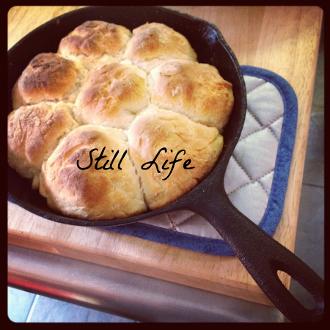Still Life ~ craft + creativity
We invited writers, artists, and musicians to share a favorite creative prompt or craft lesson, or to tell us about a book, poem, song, or film that affected them. We asked them to offer opinions and experiences on creativity, artistic processes, and the role of arts in culture. We're offering their responses here as occasional features on creativity that we're calling Still Life.
This edition of Still Life features novelist Glenn Taylor's take on how to begin any new piece of writing: with a name. Here he offers his own history of naming characters as well as a swell writing prompt.
Glenn Taylor is the author of the novels A Hanging at Cinder Bottom, The Marrowbone Marble Company, and The Ballad of Trenchmouth Taggart, a finalist for the National Book Critics Circle Award. His writing has appeared in The Oxford American, The Guardian, GQ, and Electric Literature, among others. He resided for a time in Austin, Texas, and after that, Chicago. He earned an MFA from Texas State University. Glenn was born and raised in Huntington, West Virginia, and currently serves as associate professor of English at West Virginia University in Morgantown.
(“Name” first appeared in Piano in a Sycamore: Writing Lessons from the Appalachian Writers' Workshop, edited by Silas House and Marianne Worthington.)
by Glenn Taylor
Now it’s not as simple as all that, and we’ve heard our fair share of easy “character” advice involving phone books and the online databases of baby names. But bear with me. All I can do, in the end, is offer my own path, my own stumbling foray into story and novel writing.
Think of it like this: Every human life is a story, and the story begins with a name, gifted upon birth. Usually, this is some version of first, middle, and last. Usually, it is landed upon by parents who have given considerable thought to the decision. And the story unfolds from there.
Thusly, I steal from those names already gifted—by kin or not by kin—and those lives already lived out and buried. I take a name I like from here and another from over there. This one I heard from my mother while she told of a woman who loved rollerskating. That one I picked up from my father when he told of a man with a glass eye.
Isaiah Lee Baach was a real man. By all indications, he was a great man. A businessman, a schoolteacher, Justice of the Peace. He is my wife Margaret’s great-great grandfather. My mother-in-law knew him and even lived with him for a time. Nobody called him Isaiah. From what I can gather—and that’s not much—everyone called him I. Lee.
I. Lee Baach was a first generation American, born in 1872 in Virginia. His parents were Jacob and Lena Baach, German Jews who’d immigrated to the U.S. in 1861.
I know little of his early life in Virginia. I know only of his adult life, which he lived in Kermit, West Virginia. That’s in Mingo County, home of Matewan, home of my father. You may know of Matewan by the John Sayles film of the same name.
At any rate, I’m not the family historian. My interest does not lie in biography. I am, in essence, the stealer of family monikers. I steal; I combine said monikers with other, non-family names, and then I just let it rip. I birth a book from a stolen, piecemeal name.
In this, the most recent instance, I wrote a novel about a card sharp and con man named Abe Baach. I’ve told you where I got the surname. The first name comes from the Almost-Used file of baby names, a file that houses the ones never put into rotation among my three real-life children. Eli, my youngest, was almost Abraham. Abe. But it didn’t happen, so I named my “character” Abe instead.
Then I put him on the gallows to be hung.
Just for the hell of it.
And I went from there.
But I started with a name.
So I advise would-be-writers to do the following, and then, to let it rip, boldly and without caution:
1. Seek out the interesting first name of a maternal great-grandmother or great-grandfather. Put it to paper.
2. Seek out the interesting middle name of paternal grandmother or grandfather. Put it to paper next to the first name you sought.
3. Seek out the interesting last name of a relative, acquaintance, or friend. Or, if no such last names tickle your fancy, choose one of the following last names, which I have curated willy-nilly for you, and put it to paper next to the first and middle you sought.
4. Take your new, full name and stick it at the beginning of a sentence you’ve truly worked on, something linguistically active and containing a vivid picture of a well-named thing. If I follow my own instructions, I end up with this:
I hope you get a name that births a human animal who shakes up the created world. I hope I read that name in print one of these days, and that the person who bears it becomes, to me, nothing short of real.
Visit the archives of Still Life features

_____________________________________________
Home Archives Fiction Poetry Creative Nonfiction Interview
Featured Artist Reviews Multimedia Contest Masthead Submit
_____________________________________________
